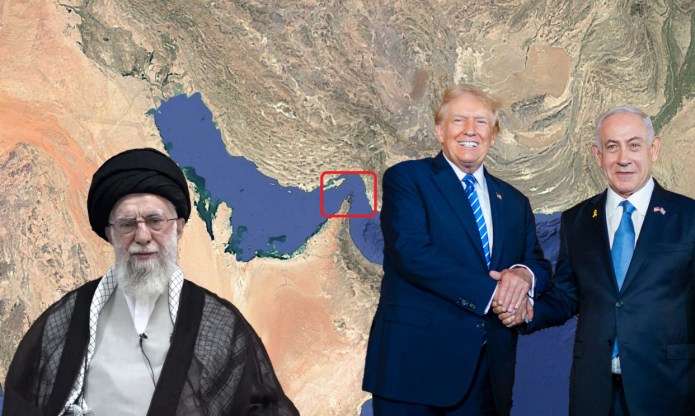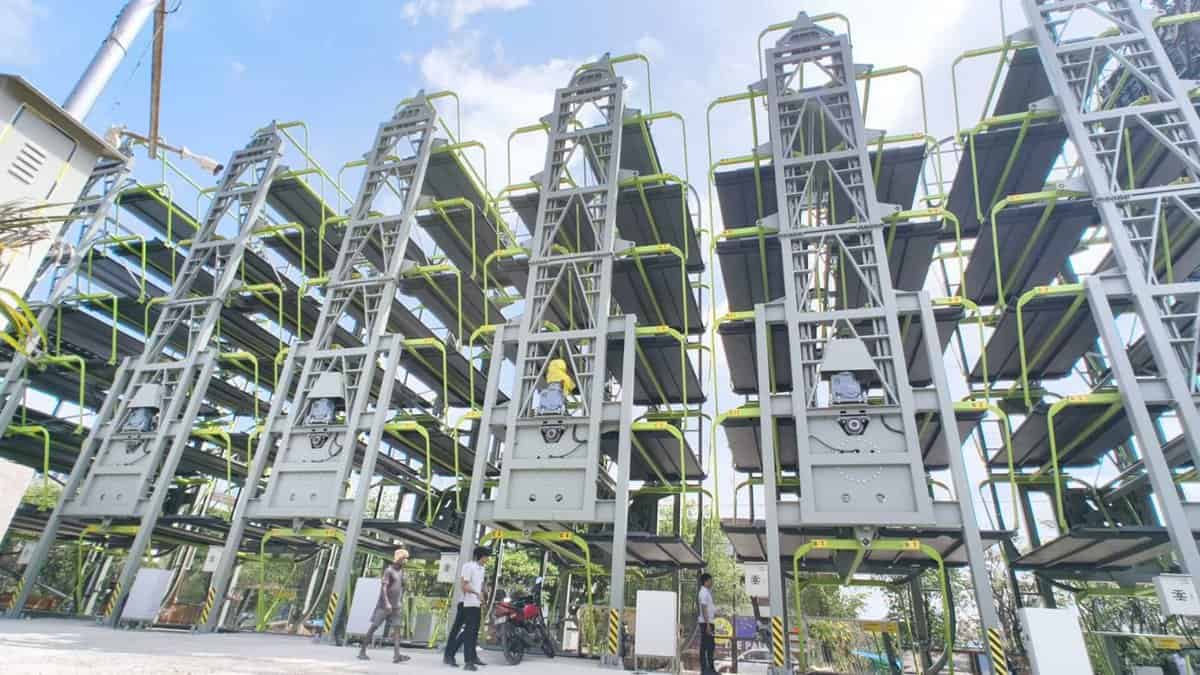Tensions have flared up dramatically in the Middle East after the United States launched targeted airstrikes on Iran’s nuclear facilities. Three of Iran’s most critical nuclear sites—Natanz, Fordow, and Arak—were bombed using bunker-busting bombs dropped from B-2 bombers. In the first act of retaliation, the Islamic Revolutionary Guard Corps (IRGC) has threatened to completely shut down the Strait of Hormuz, through which almost one-fifth of the world’s oil flows.
The statement came hours after US President Donald Trump confirmed strikes on Fordow, Natanz and Esfahan, key nuclear sites of Iran. In response, IRGC Navy Commander Brigadier General Alireza Tangsiri reportedly warned, “The Strait of Hormuz will be closed within a few hours.” However, closing the Strait of Hormuz completely is easy to say but not that easy to actually do.
What is Strait of Hormuz
The Strait of Hormuz is a narrow channel between Iran and the Omani Musandam Peninsula. It is around 30 miles wide at the narrowest point and connects the Persian Gulf to the Gulf of Oman. The Strait of Hormuz is deep and free of maritime hazards. The depth of the Strait is greatest near the Musandam Peninsula.
Commercial traffic through the Strait moves through the designated Traffic Separation Scheme (TSS) north of the Musandam Peninsula. However, the water is deep enough to accommodate larger ships to pass through an Inshore Traffic Zone south of the Omani island of Didimar. In this area, the Strait is over 650 feet deep. But often, restrictions are imposed on smaller vessels considering peacetime situations. Before 1979, the ITZ was the main shipping channel through the Strait.
There are eight major islands in the Strait, out of which seven are controlled by Iran. There is conflict of ownership of Abu Musa, Greater Tunb and Lesser Tunb islands between Iran and the United Arab Emirates because of their strategic locations. Since the 1970s, Iran has maintained military presence on these islands. Furthermore, Iran’s navy has access to open sea from bases at Chah Bahar, Bandar Abbas and Bushehr. Because of the control on these strategic islands, Iran has strong influence in the waters of the Strait.
Can Iran actually block the Strait of Hormuz? Unlike the Suez, it’s not that simple
Iran may threaten to close the Strait of Hormuz and it looks an easy task for the Islamic nation. However, in reality, it is far more complex than it sounds. Strait of Hormuz is not like the Suez Canal that can be blocked if a ship gets grounded. the Strait of Hormuz is a vast and natural waterway over 30 kilometres wide at its narrowest point.
Iran controls only the northern half of the Strait. The southern half is under the control of Oman, which has consistently championed freedom of navigation. This bilateral geography significantly limits Iran’s capability to enforce a complete blockade without escalating into full-blown war with its neighbouring countries.
While Iran has asymmetric capabilities, including fast-attack boats, naval mines, missiles and drones, any attempt to deploy these would not go unchallenged. The US Navy’s Fifth Fleet is stationed in Bahrain and maintains a permanent presence in the region. The aim of the Fleet is to prevent such disruptions in the Strait of Hormuz.
Furthermore, there are multiple global powers other than the US that routinely patrol these waters to ensure that no single actor can dominate the passage.
Even a temporary disruption in the Strait would invite swift military and diplomatic retaliation. It would also hurt Iran’s own economic interests. Its allies like China will not be happy with the disruption in oil supply through the Strait of Hormuz.
It may also push regional adversaries to unite against Iran. Several countries on the Persian Gulf depend of the strait for marine trade, including UAE, Iraq, Saudi Arabia, Qatar, Bahrain, and Kuwait. These nations will not like the vital path to be shut down.
Thus, while Iran can certainly raise tensions and delay shipments temporarily, converting the Strait into a non-passable corridor is a far-fetched dream.
Importance of Strait of Hormuz for India
A closure or disruption in the Strait of Hormuz would spell trouble for India. Nearly 70% of its crude oil and almost 40% of its LNG imports pass through this route, with Qatar alone supplying nearly 10 million tonnes of LNG in 2024. Any blockage could severely impact energy security and prices. Additionally, India faces a diplomatic dilemma, having close ties with both Israel and Iran. With Chabahar port and the IMEC corridor already stalled due to rising tensions, India’s strategic and energy interests now hang in delicate balance amidst the worsening Israel-Iran standoff.
Notably, in 2024, India and Iran signed a 10-year pact over Chabahar, allowing India to manage the port for one decade. In 2016, during Prime Minister Narendra Modi’s visit to Iran, an agreement for Chabahar was inked. When Iran’s president, Hassan Rouhani, paid a visit to India in 2018, the prospect of expanding India’s role at the port was extensively discussed.
Risks to Iran outweigh the rewards
Even if Iran succeeds in disrupting oil traffic for some time, it may not sustain such actions for long. Iran’s own economy is supported by oil production and its sale to the world. China, which buys over three-quarters of Iran’s oil, would be affected. Beijing may exert pressure on Tehran to keep trade lanes open.
Furthermore, by closing the waterways, Iran would risk angering Oman and further straining relations with the Gulf Cooperation Council. Oman has historically advocated for maritime peace, and any hostile act may isolate Iran further in the region.
Iran’s domestic economy is fragile and cannot absorb the shock. Any disruption in oil revenue could trigger unrest among an already agitated population. The regime is grappling with protests and economic distress. Any disruption will result in uncontrollable inflation, leading to compounded internal instability.
Historical context shows restraint
Notably, even during the Iran-Iraq war in the 1980s, when both sides attacked oil tankers, the Strait of Hormuz remained open. Past conflicts have seen escalation, but never a full shutdown of the Strait. Iran has threatened to close the strait several times in the past, but never actually did it. History suggests that Tehran knows the cost of going that far.
In conclusion, while Iran may continue to rattle sabres and use the Strait as a geopolitical pressure point, the possibility of a complete closure remains remote. The Strait of Hormuz is not something that can be easily “blocked”, neither using a halted ship nor military might, certainly not without consequences that Iran may not be ready to bear.















































